 Technology
Technology  Technology
Technology  Humans
Humans 10 Everyday Human Behaviors That Are Actually Survival Instincts
 Animals
Animals 10 Animals That Humiliated and Harmed Historical Leaders
 History
History 10 Most Influential Protests in Modern History
 Creepy
Creepy 10 More Representations of Death from Myth, Legend, and Folktale
 Technology
Technology 10 Scientific Breakthroughs of 2025 That’ll Change Everything
 Our World
Our World 10 Ways Icelandic Culture Makes Other Countries Look Boring
 Misconceptions
Misconceptions 10 Common Misconceptions About the Victorian Era
 Mysteries
Mysteries 10 Strange Unexplained Mysteries of 2025
 Miscellaneous
Miscellaneous 10 of History’s Most Bell-Ringing Finishing Moves
 Technology
Technology Top 10 Everyday Tech Buzzwords That Hide a Darker Past
 Humans
Humans 10 Everyday Human Behaviors That Are Actually Survival Instincts
 Animals
Animals 10 Animals That Humiliated and Harmed Historical Leaders
Who's Behind Listverse?

Jamie Frater
Head Editor
Jamie founded Listverse due to an insatiable desire to share fascinating, obscure, and bizarre facts. He has been a guest speaker on numerous national radio and television stations and is a five time published author.
More About Us History
History 10 Most Influential Protests in Modern History
 Creepy
Creepy 10 More Representations of Death from Myth, Legend, and Folktale
 Technology
Technology 10 Scientific Breakthroughs of 2025 That’ll Change Everything
 Our World
Our World 10 Ways Icelandic Culture Makes Other Countries Look Boring
 Misconceptions
Misconceptions 10 Common Misconceptions About the Victorian Era
 Mysteries
Mysteries 10 Strange Unexplained Mysteries of 2025
 Miscellaneous
Miscellaneous 10 of History’s Most Bell-Ringing Finishing Moves
10 Nightmares Lurking Just Behind History
For the most part, history is a lie. Like Disney conveniently forgetting Sleeping Beauty’s rape, scholars have spent a great deal of time trimming the more “sensitive” facts from history, leaving us with a collection of bland, easily digestible anecdotes. Sure, these “scenes from the cutting room floor” may not always be relevant, but they almost always bring the past to life.
Sometimes, though, we end up wishing it had stayed dead. Sometimes, the parts they don’t teach you in high school aren’t just unfit for a Disney movie but would make Quentin Tarantino blush. Here are ten nightmarish vignettes from history that you may not be familiar with.
10 Pavlov’s Forgotten Experiments
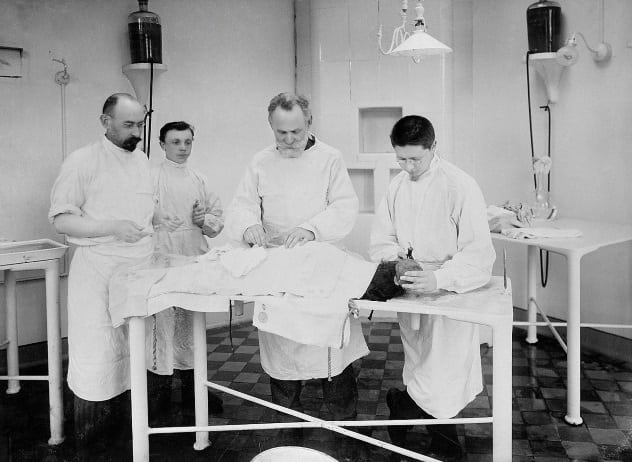
Anyone with any knowledge of psychology knows about Ivan Pavlov. His experiments on dogs in the late 19th century made him a household name, at least if your house is full of Psych majors. By ringing a bell when food was presented to his canine subjects, he observed that they would eventually come to salivate at the sound of the bell alone, before receiving food. This paved the way for the behavioral psychology we know today.
But, in reality, his experiments were a bit more extreme. It turns out that Pavlov never once used a bell; he did, however, employ a buzzer, a metronome, a harmonium, and electric shocks to forge mental associations. More horrifically, in order to keep his dogs hungry and ready to test, he surgically carved holes in their throats so that any swallowed food would simply fall out.[1] Additional holes were opened along the animals’ digestive tracts so that various fluids could be collected for analysis and, bizarrely, to be sold as a remedy for stomach ailments. In addition to being extremely painful, these mutilations resulted in several dogs starving to death despite nonstop feedings.
9 World War I’s Unexpected Drownings
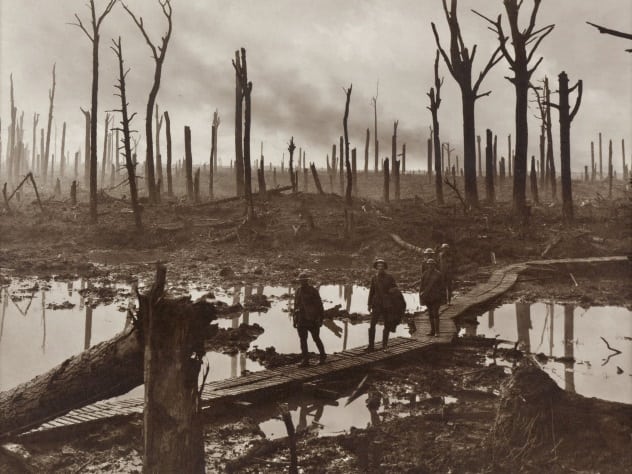
During the summer of 1917, near Passendale (also spelled Passchendaele), Belgium, the Third Battle of Ypres (aka the Battle of Passchendaele) was in full swing. It was trench warfare at its finest as British and German forces clashed, heavy artillery thundered, and PTSD sufferers were spawned en masse. Then it began to rain. For over a month, torrential rainfall pelted the region, bringing the battle to an almost certainly welcome halt.
But the relief was short-lived. It turns out water and dirt create a bizarre substance called “mud,” and nowhere has more exposed dirt than a trench battlefield. As tons of the sticky mixture filled every available space, including the massive craters left by artillery, entire stretches of land became impassable death traps. The water also soaked into the large greatcoats worn by soldiers of the era, adding roughly 23 kilograms (50 lb) of weight just begging to drag them down.
Needless to say, the results were nightmarish. Wounded soldiers were left to slowly drown beneath the ooze, as rescuers couldn’t get near them.[2] Corpses, buried eye-deep, stared from murky pools. The few troops who managed to survive the sludge only did so by walking along the submerged bodies of their friends.
8 The ‘President Taft’ Killer
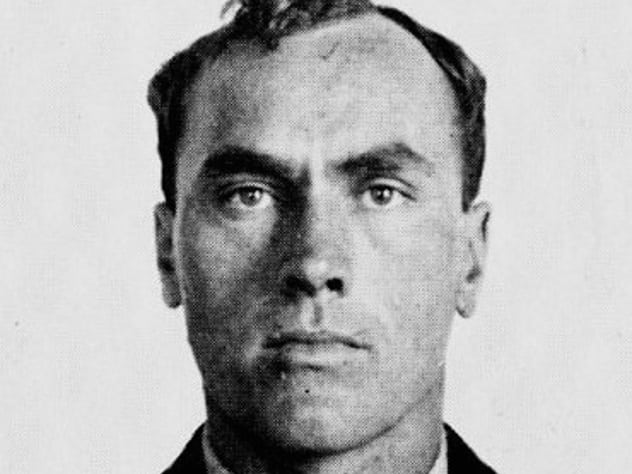
President William Howard Taft may not be as well-known as Lincoln or JFK—unless you count that whole bathtub myth—but he has nevertheless left his mark upon American history. It’s just a shame that the mark involves rampant rape and murder.
In 1920 Taft’s New Haven, Connecticut, home was burglarized by a man named Carl Panzram. He mostly took what you would expect, money and jewelry, but he also got his hands on something special—Taft’s .45 pistol.[3] He kept the gun, sold the jewelry, and used the cash to buy a yacht, which he sailed to New York City. He had a plan.
Under the alias John O’Leary, Panzram began luring sailors aboard his vessel with promises of work. After sailing out to sea, the unfortunate sailors were raped, murdered with Taft’s pistol, weighted with rocks, and tossed into Long Island Sound. Fleeing the city after arousing suspicion, Panzram hopped to various locations around the world in search of new victims before being caught and hanged in 1930. He confessed to the rape and murder of 22 people.
7 London’s ‘Great Stink’
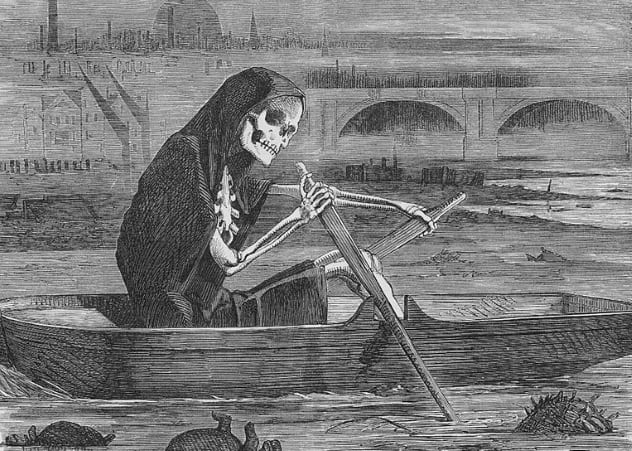
Victorian England is generally believed to have been the pinnacle of polite society; the very words conjure images of gentlemen in top hats cruising around in carriages. And that’s probably accurate enough, but as Charles Dickens reminds us, there was always a revolting reality beneath the “Good day, sir” facade. That reality, in this case, was a river of human feces.
The summer of 1858 was a rough one for England’s capital city. The heat was miserable enough, but the sanity-threatening stench it created was worse. For centuries, London had simply dumped its sewage into the River Thames, which ran right through the heart of the city. This had worked well previously, but the early years of the 19th century saw London’s population double, completely choking the river with human waste. The relentless heat fermented the miles-long stretch of feces into the world’s largest stink bomb, its “evil odour” forcing many, including all of Parliament, to evacuate.[4] After the biggest city in the world was brought to its knees by stench alone, city planners finally gave in and built a proper sewage system, which is still in place today.
6 The Lindbergh Kidnapping Torture Squad

After his 1927 solo flight across the Atlantic—the first in history—to say Charles Lindbergh was a national hero was an understatement. He was the object of worldwide admiration but also the target of one of the most high-profile crimes of the 20th century: the 1932 kidnapping of his infant son. The public was outraged and desperate for answers—no one more so than detective Ellis Parker.
Despite the conviction and impending execution of Bruno Richard Hauptmann, Parker remained convinced that the real culprit was former New Jersey attorney Paul Wendel. So, on nothing more than a hunch, Parker enlisted three men, including his own son, to snatch Wendel off the street, tie him up in a tiny Brooklyn basement, and make him talk.
In order to “encourage” a confession, Wendel’s captors starved him, partially melted his face with a hot light bulb, beat him with anything they could get their hands on, and threatened to put cigarettes out in his eyes. The grand finale, however, was lashing the brutalized man to an improvised rack and stretching his neck by tying weights to his head.[5] Wendel eventually confessed to end his torment but rescinded it immediately after. He was never convicted.
5 The First Lady’s Unusual Accessories
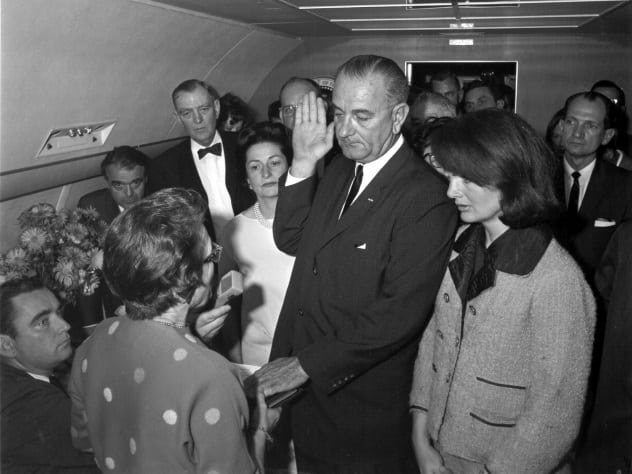
The events surrounding President John F. Kennedy’s fateful 1963 visit to Dallas, Texas, are extremely well-known; in fact, you are probably more familiar with his death than his actual presidency. But one bizarre and chilling detail of that November day always seems to escape mention: Jackie Kennedy stubbornly wore her freshly deceased husband’s blood and brain paste for the better part of 24 hours.
When the president was shot, the first lady first dove after the larger bits of his exploded head and then held him as he bled out. This understandably left her now-famous pink suit a little worse for wear. Regardless, she continued to wear it—all the way to the hurried swearing-in of the new President Lyndon Baines Johnson aboard Air Force One. She was urged to change before the event but refused, saying simply: “I want them to see what they have done.”[6]
Incidentally, the suit still hasn’t been cleaned. It is currently locked away from public view in a climate-controlled vault in Washington DC’s National Archives until 2103.
4 Ancient Egypt’s Parasite Problem

When you think of the ancient Egyptians, you probably think of a few very specific things—mighty pyramids, gold-plated coffins, those guys fanning pharaohs with giant palm fronds, and so on. What you probably don’t think of, however, are bleeding penises. Until today.
The discovery of irrigation by the ancient Egyptians was a great one. It made farming possible, which, in turn, allowed their civilization to grow as powerful as it did. However, it also created large marshes, which were ideal habitats for Schistosoma haematobium, a parasitic worm that tended to burrow into the penises of farmers. Victims of the worms would experience not only pain but heavy bleeding from the penis as well.[7]
And these weren’t just a few isolated incidents; infection was so common among the farming lower class that the symptoms were believed to be a normal part of life. In fact, boys weren’t considered “men” until they saw blood in their urine, as if it was the male equivalent of menstruation.
3 The Unbelievably Unpopular Prime Minister
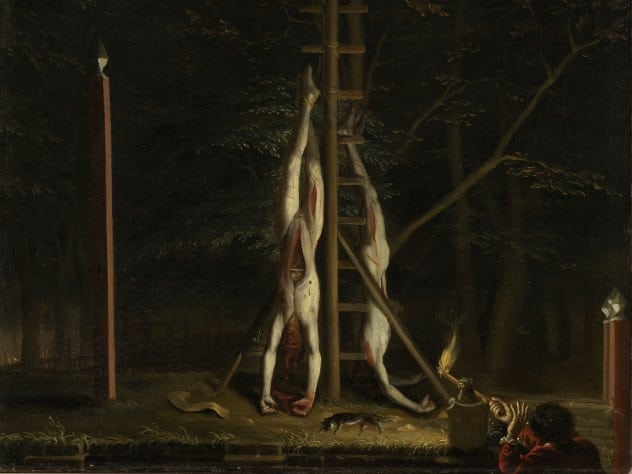
History is absolutely packed with unpopular—and brutally executed—politicians. So how do you manage to stand out from the crowd? Just ask Johan de Witt.
In 1672, after several military blunders, Holland was in pretty bad shape. As you might expect, de Witt was blamed for absolutely all of it, due in large part to the influence of rival politicians. The public’s hatred for him slowly grew until it exploded in the most ridiculously over-the-top political statement of all time.
Still recovering from a recent assassination attempt and escorted by armed guards, de Witt visited his statesman brother, Cornelis. As the men spoke, a mob of enraged citizens gathered outside. De Witt’s guards held the crowd at bay as best they could but were suddenly—and highly suspiciously—ordered to leave. The mob descended upon the brothers, emptied every bullet they could find into them, sliced off their genitalia, and strung them up upside down. The de Witts were then slit open, and the crazed citizens began pulling out their entrails, roasting them, and eating them.[8] It is believed Cornelis was still alive when the evisceration started.
2 The Gold Rush’s Booming Side Industry
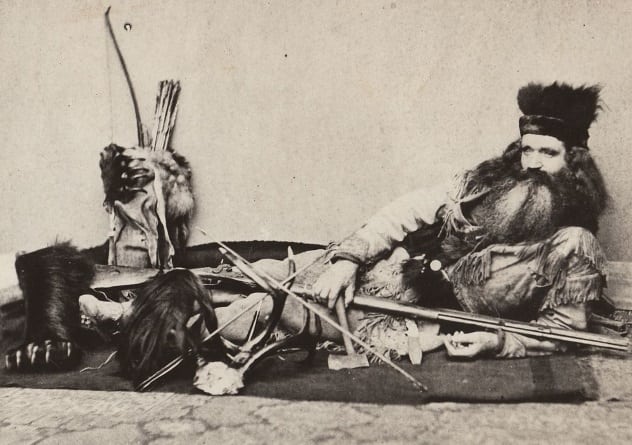
When gold dust was discovered at California’s Sutter’s Mill in 1848, the ensuing Gold Rush drew millions of settlers to the then-obscure territory in search of their fortunes. Some hit it big; most didn’t. But regardless of how much time and energy was wasted by the disappointed miners, the real losers were California’s native populations.
In just two decades, native communities that had existed for thousands of years were systematically exterminated. Military massacres of entire villages were commonplace, but the Californian government didn’t want to exclude its many new citizens from the fun. In addition to the legalization of the kidnapping and enslavement of natives, towns began paying for native body parts.
And not just a few of the more bloodthirsty communities, either. This booming new “scalp industry” (heads, hands, and feet were also acceptable, but the scalp was the real “prize”) paid up to $200 a scalp, earning it nearly as many takers as the Gold Rush itself.[9] Accounts describe mules led into villages completely piled with native heads, scalps, and whatever else might fetch a few dollars. The California government paid out millions of dollars for these grisly trophies.
1 The City Of Cannibals
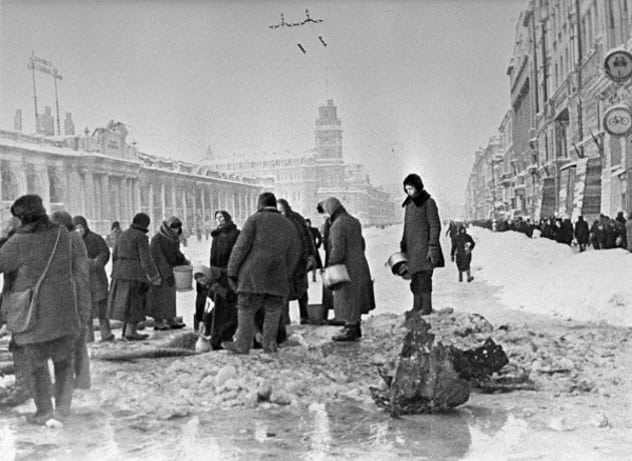
Between Pearl Harbor, the atomic bombs, Nazi concentration camps, and the Nazis themselves, World War II easily takes the terrifying wartime cake. But hiding behind the well-worn history books and multiple movie adaptations is a chapter of the war seemingly too nightmarish to include: the siege of Leningrad.
It sounds innocuous enough, but the three-year Nazi blockade of Leningrad—now St. Petersburg, Russia—killed as many as ten times the number of people of the Hiroshima bombing. However, what really made the siege stand out in a conflict so brimming with horror was the way in which it killed: starvation. Sure, the Germans bombed the city, but their star player was the slow, withering death imposed upon millions by blocking the city’s food supply.
At first, people got creative; they licked the starchy paste from their wallpaper, boiled leather boots into jelly, and made pancakes from face powder. Then, after exhausting their stray cat supply, they got desperate. By this point, millions had fallen to hunger, and survivors just couldn’t justify letting good meat go to waste. Corpse-eating, or trupoyedstvo, became a regular part of life.
But more horrifically, so did lyudoyedstvo, person-eating. Some just couldn’t wait for their dinner to die on its own, like the mothers who fed their infants to their older children, the man who ax-murdered his grandmother for her liver, the father who fed his son his own mother, and the roving gang of man-eaters snatching the unwary off the streets. In total, over 2,000 Leningrad citizens were arrested for cannibalism.[10]
Read more historical tidbits that are usually omitted on 10 Facts Usually Left Out From The Life Of George Washington and 10 Horrific Stories Disney Left Out Of Pocahontas.








